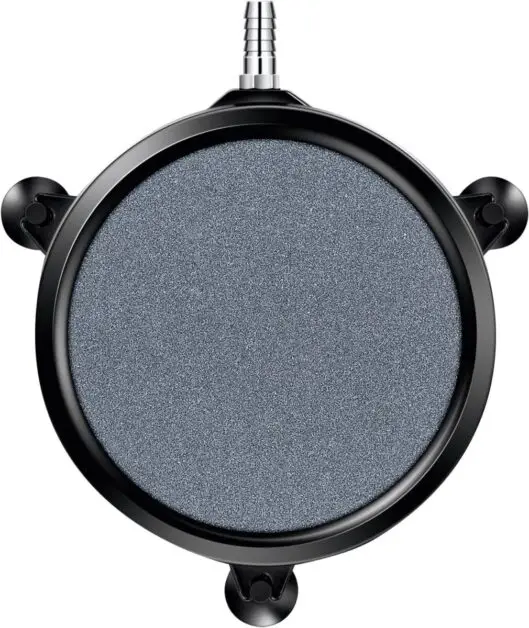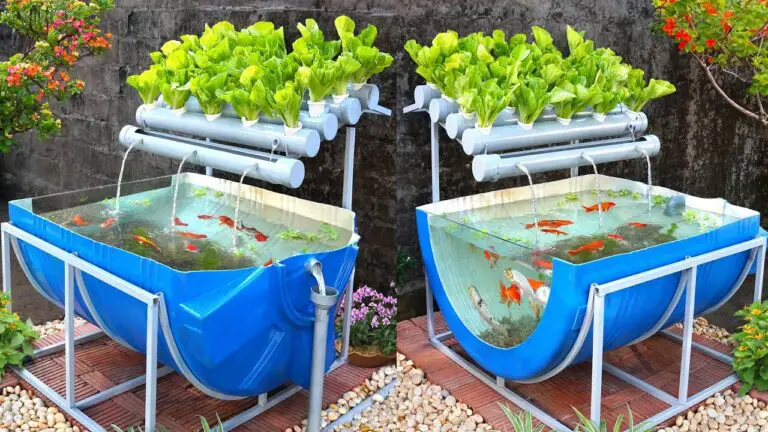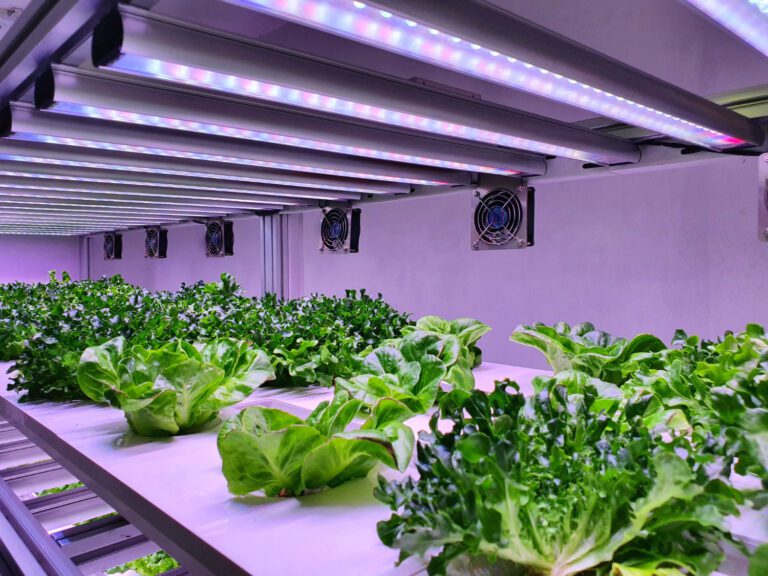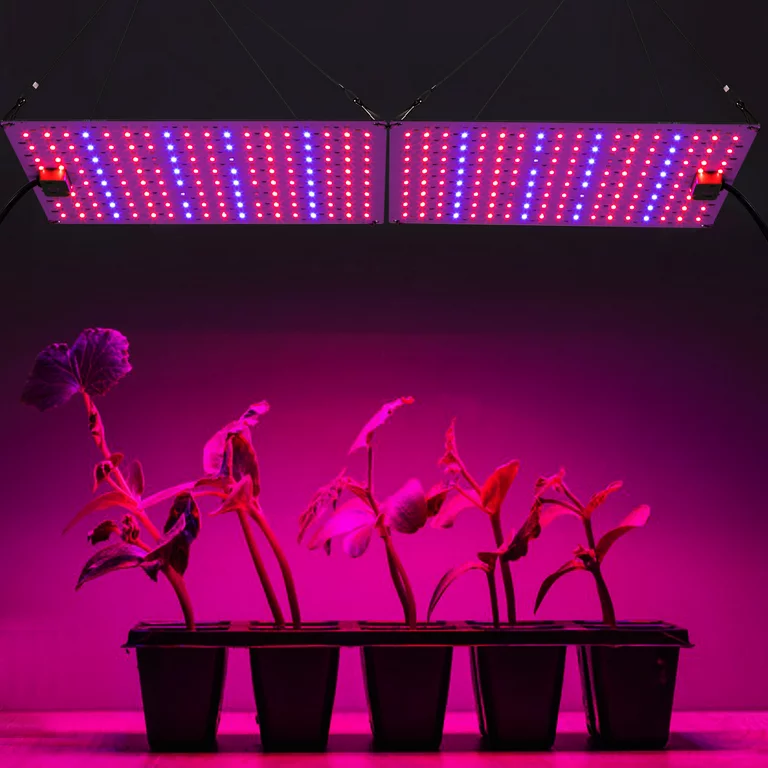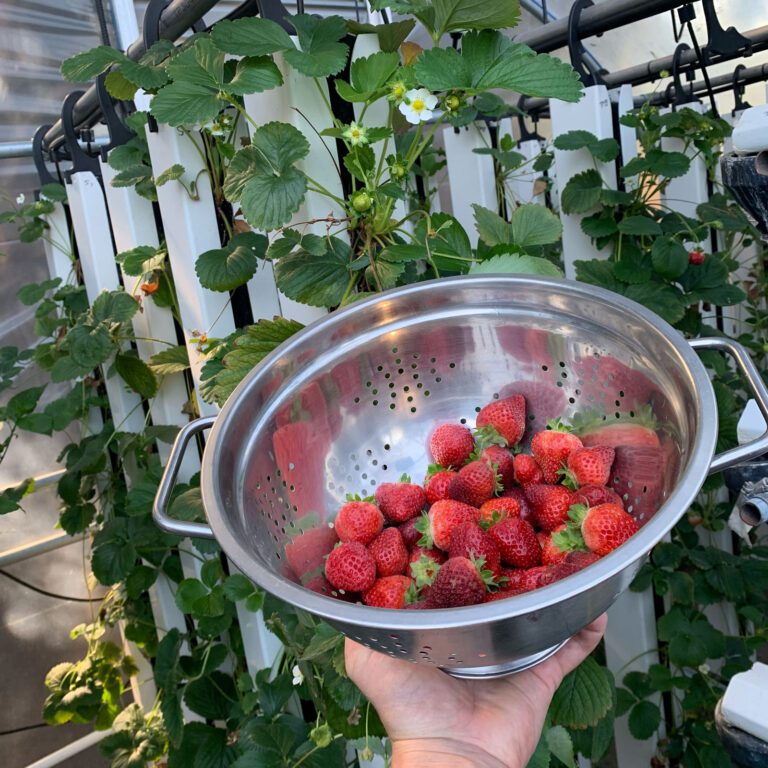Rice Hulls as a Medium: Starting Your Own Hydroponic Garden
Did you know that you can grow your own hydroponic garden using rice hulls as a medium? Yes, you heard that right! Rice hulls, often discarded as waste, can be repurposed to create a nutrient-rich environment for your plants to thrive. In this guide, we’ll explore how you can kickstart your hydroponic journey with this unconventional yet effective medium. From setting up your system to maintaining healthy growth, we’ll cover it all. So, if you’re ready to take the plunge into sustainable gardening and enjoy fresh produce right at home, read on! Let’s transform those rice hulls into a flourishing hydroponic oasis.
Table of Contents
Rice Hulls as a Medium: Starting Your Own Hydroponic Garden
Rice hulls are increasingly being recognized as an excellent medium for hydroponic gardening due to their numerous advantages. As a beginner looking to start your own hydroponic garden, using rice hulls as a growing medium can provide you with a solid foundation for success.

- Excellent Drainage: Rice hulls excel in drainage, unlike perlite or vermiculite, preventing waterlogging and maintaining airflow for healthy roots.
- Consistent Airflow: Due to their non-compacting nature, rice hulls ensure consistent airflow within the growing medium, promoting optimal oxygen levels for plant growth.
- Lightweight and Manageable: Rice hulls are lightweight and easy to handle, simplifying the setup and maintenance of hydroponic system.
- Versatile Compatibility: Whether using a Deep Water Culture (DWC) or Nutrient Film Technique (NFT) system, rice hulls provide stability for plants while allowing nutrient solutions to circulate freely around the roots.
“Rice hulls have been a game-changer in my gardening journey! Their lightweight yet effective nature makes them an ideal organic mulch. I noticed a significant reduction in weed growth after using rice hulls, which saved me hours of tedious weeding. Additionally, their ability to retain moisture helped my plants thrive even during dry spells, reducing my overall water usage. However, I did encounter some challenges with pest attraction, so ensuring proper storage and application is crucial. Overall, rice hulls have proven to be a valuable addition to my gardening arsenal, improving soil health and simplifying maintenance.”
- Organic Material: Rice hulls are a natural byproduct of rice processing, making them an eco-friendly option for gardeners looking to improve soil structure and fertility.
- Weed Suppression: When used as mulch, rice hulls can help suppress weed growth, reducing the need for chemical herbicides and manual weeding.
- Soil Aeration: These lightweight hulls can improve soil aeration, preventing compaction and promoting healthy root growth.
- Water Retention: Rice hulls can aid in moisture retention in the soil, reducing the frequency of watering and helping plants withstand dry spells.
- Slow Decomposition: Unlike some organic mulches, rice hulls decompose slowly, providing long-lasting benefits to the soil structure.
- Nutrient Content: While rice hulls can improve soil structure, they have minimal nutrient content compared to other organic amendments like compost or manure.
- Potential Pests: In some cases, rice hulls may attract pests such as rodents or insects, particularly if they contain residual rice grains.
- Limited Availability: Depending on your location, finding a reliable source of rice hulls may be challenging, limiting accessibility for some gardeners.
- Cost: Although rice hulls are generally affordable, the cost may vary depending on factors such as transportation and demand in your area.
- Application Challenges: Due to their lightweight nature, rice hulls can be prone to blowing away in windy conditions, requiring frequent replenishment or additional mulching materials for stability.
Understanding Hydroponics: Exploring the Basics of Soilless Gardening
Hydroponics is a modern gardening method that is gaining popularity among gardening enthusiasts. Unlike traditional gardening, hydroponics does not rely on soil as a growing medium. Instead, plants are grown in nutrient-rich water solutions that provide all the essential elements needed for their growth. This soilless gardening technique offers several advantages, including efficient use of resources and space, increased crop yields, and the ability to grow plants in any location, regardless of soil conditions.

- Nutrient Film Technique (NFT):
- Involves circulating a thin film of nutrient-rich water over plant roots.
- Provides direct access to nutrients without soil.
- Efficient nutrient uptake for healthy growth.
- Deep Water Culture (DWC):
- Plant roots submerged in continuously oxygenated nutrient solution.
- Promotes rapid growth, commonly used for leafy greens and herbs.
- Control Over Plant Nutrition:
- Adjust nutrient solution composition for optimal plant health.
- Precise nutrient delivery leads to better yields.
- Environmental Control:
- Manage pH levels, temperature, and humidity.
- Create ideal conditions for plant growth.
- Reduced Pest and Disease Risks:
- Soil-free environment minimizes pests and weeds.
- Healthier plants with fewer disease concerns.
Hydroponics is a sustainable and efficient method that can revolutionize food production. 🌱🍅 .
The Benefits of Hydroponics: Why Choose this Method for Your Garden
Hydroponics is becoming an increasingly popular method for gardening enthusiasts, and for good reason. This soilless gardening technique offers a multitude of benefits that make it an attractive choice for those looking to maximize their garden yields.
- Optimized Water Usage: Hydroponics allows precise control over water delivery, reducing water waste compared to traditional soil gardening.
- Environmental Friendliness: Studies indicate hydroponic systems use up to 90% less water, making it eco-friendly, especially in water-scarce regions.
- Prevention of Water Runoff: Controlled hydroponic environments minimize excess water runoff, reducing soil erosion and pollution of water sources.
- Accelerated Growth and Higher Yields: By providing plants with precise nutrients, hydroponics promotes accelerated growth and higher yields compared to traditional gardening methods reliant on soil quality variability.
In hydroponics, however, the nutrients are directly delivered to the plants’ roots, resulting in faster growth and higher crop yields. This precision nutrient delivery also minimizes the risk of nutrient deficiencies or imbalances, ensuring healthy and robust plants throughout the growing season.
Exploring Different Hydroponic Systems: Finding the Right Fit for You
When it comes to hydroponics, there are various systems to choose from, each with its own advantages and considerations. Finding the right system for your hydroponic garden will depend on factors such as space availability, desired crop types, and personal preferences. Let’s explore some of the different hydroponic systems available to help you make an informed decision.

- The Kratky Method:
- This is a basic and outdated system, often used by beginners or for fun.
- All you need is a jar or tank filled with a nutrient solution.
- Plant your crops with their aerial parts above the solution and roots submerged.
- Sweet potatoes grown in vases exemplify the Kratky method.
- Advantages: Simplicity and minimal setup.
- Disadvantages: Limited use due to its rudimentary nature.
- Deep Water Culture (DWC):
- Plants grow directly in nutrient-rich water.
- Roots are suspended in the solution, allowing for efficient nutrient absorption.
- Advantages: Rapid growth and straightforward setup.
- Disadvantages: Requires an air pump to oxygenate the water.
- Wick System:
- Utilizes a wick to transport nutrients from a reservoir to the plant roots.
- Simple and low-cost.
- Advantages: Easy to set up and maintain.
- Disadvantages: Limited scalability and potential uneven nutrient distribution.
- Ebb and Flow (Flood and Drain):
- Nutrient solution floods the growing medium periodically and then drains.
- Suitable for various crops.
- Advantages: Good nutrient distribution and flexibility.
- Disadvantages: Requires a timer and may be prone to pump failures.
- Nutrient Film Technique (NFT):
- A thin film of nutrient solution flows over the roots.
- Ideal for herbs and leafy greens.
- Advantages: Efficient nutrient delivery and space-saving.
- Disadvantages: Sensitive to power outages and clogs.
- Drip System:
- Nutrient solution drips onto the growing medium or roots.
- Commonly used for larger plants.
- Advantages: Versatile and customizable.
- Disadvantages: Requires regular maintenance and can be wasteful if not optimized.
- Aeroponics:
- Roots are misted with a nutrient solution.
- High oxygen exposure promotes rapid growth.
- Advantages: Excellent nutrient absorption and minimal water usage.
- Disadvantages: Complex setup and sensitive to system failures.
Remember, the choice of system depends on factors like space, crop type, and personal preferences. Each system has its pros and cons, so explore and find the one that suits your needs best! 🌿🌟
Getting Started with Hydroponics: Essential Tools and Equipment
Hydroponics is an innovative gardening method that allows you to cultivate plants without soil. Instead, plants are grown in a nutrient-rich solution, providing them with everything they need to thrive. If you’re new to hydroponics and looking to get started, there are a few essential tools and equipment that you’ll need to ensure success.

- Select a Hydroponic System: Choose from drip systems, NFT systems, or DWC systems based on your needs and space.
- Invest in pH and TDS Meters: Monitor pH and nutrient levels with reliable meters to ensure optimal plant growth.
- Secure Water Pump and Oxygenation Equipment: Use a water pump for nutrient circulation and air stones or diffusers to oxygenate roots effectively.
- Get Quality Grow Lights: Opt for LED lights for energy efficiency and long-lasting performance in providing essential light spectrum.
- Acquire Growing Trays and Media: Utilize trays or containers along with growing media like rockwool cubes or perlite to support plant growth.
- Set up a Timer: Control lighting schedules efficiently with a timer to mimic natural sunlight conditions for plants.
By investing in these essential tools and equipment, you’ll be well on your way to starting your own hydroponic garden. Remember to thoroughly research and select the right system for your needs, and familiarize yourself with proper maintenance and care techniques to ensure successful plant growth. So, get ready to embark on an exciting journey into the world of hydroponics and experience the joys of soilless gardening firsthand!
“VIVOSUN air stones have truly transformed my hydroponic setup! With their efficient oxygenation, my plants are thriving like never before. The increased oxygen levels have resulted in healthier root systems and faster growth, leading to bountiful harvests. Installation was a breeze, and these air stones have proven to be durable and reliable. However, I did notice some noise from the air pump, but it’s a small price to pay for the incredible benefits they provide. Overall, VIVOSUN air stones have exceeded my expectations, and I highly recommend them to any hydroponic enthusiast looking to optimize their system’s performance.”
✅ Enhanced Nutrient Uptake: Oxygen-rich water encourages better nutrient absorption by plant roots, optimizing nutrient delivery and minimizing the risk of nutrient deficiencies.
✅ Reduced Algae Growth: By circulating water and preventing stagnation, air stones help inhibit algae growth in hydroponic systems, maintaining water clarity and hygiene.
✅ Easy Installation: These air stones are simple to install and compatible with various hydroponic setups, making them suitable for both beginners and experienced growers.
✅ Durable Construction: Constructed from high-quality materials, VIVOSUN air stones are durable and long-lasting, providing reliable oxygenation for extended periods.
❌ Regular Maintenance: To ensure optimal performance, air stones require periodic cleaning to prevent clogging and maintain efficient oxygenation.
❌ Additional Equipment Needed: Depending on the size of your hydroponic system, you may need multiple air stones and an air pump, which can add to the overall cost.
❌ Potential Damage: Improper handling or placement of air stones can lead to damage or breakage, compromising their effectiveness and requiring replacement.
❌ Compatibility Issues: While VIVOSUN air stones are versatile, compatibility with certain air pumps or tubing sizes may vary, necessitating careful selection to avoid compatibility issues.
Selecting the Ideal Growing Medium for Your Hydroponic Garden
When it comes to selecting the ideal growing medium for your hydroponic garden, there are several factors to consider. The growing medium plays a crucial role in providing stability and support to the plants, as well as facilitating the delivery of nutrients and water. Additionally, it affects the overall health and growth of the plants.
- Water-Holding Capacity: Select a growing medium that retains moisture while allowing proper drainage to prevent waterlogging and root rot.
- pH Stability: Ensure the growing medium maintains a suitable pH range for optimal nutrient absorption by the plants.
- pH level should match specific plant requirements.
- Texture and Structure: Choose a medium that offers adequate support for root development and allows easy penetration and spread.
- Promotes strong root development.
- Sterility: Opt for a sterile or disease-free medium to prevent pathogen introduction and weed competition.
- Prevents harm to plants and ensures a clean, healthy garden.
- Considerations: Factor in availability, cost-effectiveness, sustainability, and ease of use when selecting a medium.
- Different options include perlite, vermiculite, coconut coir, and rockwool cubes, each with unique pros and cons.
Rice Hulls as a Growing Medium: Exploring Its Advantages and Uses
Rice hulls are increasingly gaining popularity as a growing medium in hydroponic gardening due to their numerous advantages and versatile uses.

Understanding the Properties of Rice Hulls: What Makes Them Ideal
Rice hulls are an increasingly popular choice for hydroponic gardening due to their unique properties that make them ideal for this soilless growing method.
- Excellent Drainage:
- Rice hulls have a coarse texture and large particle size.
- This allows water to flow freely through the medium, preventing waterlogging.
- Proper drainage ensures that plant roots have access to oxygen, promoting healthy growth.
- Lightweight and Easy to Handle:
- Rice hulls are lightweight, making them convenient to work with.
- Handling and transporting them is hassle-free, especially for larger hydroponic systems.
- Reduced weight load benefits vertical gardening setups and portable systems.
- Sustainability:
- Rice hulls are a byproduct of rice production.
- Using them as a growing medium contributes to sustainability.
- Local sourcing minimizes environmental impact and supports regional agriculture.
By incorporating rice hulls into your hydroponic system, you can create an optimal environment for your plants to thrive and achieve success in your soilless gardening endeavors.
Preparing Rice Hulls for Hydroponic Use: Cleaning and Sterilizing Techniques
To ensure the success of your hydroponic garden, it is crucial to properly prepare rice hulls before using them as a growing medium. Cleaning and sterilizing techniques are essential in minimizing the risk of pests, diseases, and unwanted contaminants that could hinder the growth of your plants.

Remove debris and foreign particles:Sift the rice hulls through a fine-mesh screen to separate any sticks, stones, or other unwanted materials.
This ensures that only clean hulls are used in your hydroponic system.
Sterilization eliminates potential pathogens:Steam Sterilization:Steam the rice hulls for approximately 30 minutes.
This kills harmful organisms and breaks down any remaining lignin or organic matter.
Bleach Soaking:Soak the rice hulls in a dilute bleach solution:Ensure the hulls are completely submerged.
Maintain the soaking for at least 15 minutes.
This method effectively disinfects the hulls, making them safe for hydroponic use.
By taking the time to clean and sterilize your rice hulls, you are setting a strong foundation for a healthy and thriving hydroponic garden. Incorporating these preparation techniques will not only help to prevent the introduction of harmful contaminants but also promote optimal plant growth and overall success in your hydroponic endeavors.
Mixing Rice Hulls with Other Growing Media: Creating the Perfect Blend
When it comes to creating the perfect blend for your hydroponic garden, mixing rice hulls with other growing media can offer numerous benefits. Rice hulls are lightweight, porous, and have a high water-holding capacity, making them an excellent addition to various growing mediums.
coconut coir
One popular combination is to mix rice hulls with coconut coir. Coconut coir provides a good structure for the roots to grow, while the rice hulls aid in retaining moisture and improving aeration. This blend offers a balanced water-to-air ratio, ensuring optimal root development and nutrient uptake for your plants. Additionally, the coconut coir helps in maintaining the pH balance of the medium, while the rice hulls contribute to proper drainage, preventing waterlogging issues.
Perlite
Another effective mix involves combining rice hulls with perlite. Perlite is a lightweight volcanic rock that adds excellent drainage to the growing medium. By incorporating rice hulls into this mixture, you enhance moisture retention and provide a more stable environment for your plants. This blend is particularly suitable for plants that require good aeration and root development, such as lettuce or herbs.
Ensuring Proper Drainage with Rice Hulls: Preventing Waterlogging Issues
- Preventing Waterlogging: Rice hulls have excellent drainage properties due to their porous structure, preventing excess water from accumulating and causing waterlogging.
- Balanced Oxygen Levels: Incorporating rice hulls into hydroponic systems helps maintain a balanced and oxygen-rich environment for plant roots.
- Root Health: Effective drainage prevents issues like root rot, nutrient deficiencies, and stunted growth caused by waterlogging.
- Buffering Effect: Rice hulls act as a buffer, allowing water to flow through the growing medium while retaining enough moisture to keep plants hydrated.
- Optimal Hydration: The balance provided by rice hulls ensures that roots receive adequate oxygen and hydration without excessive water retention.
Nutrient Absorption in Rice Hulls: How to Provide Essential Elements to Your Plants
Rice hulls are a unique and effective growing medium in hydroponic systems. One of their notable advantages is their ability to absorb and retain essential nutrients, providing plants with the elements they need for healthy growth. Nutrient absorption in rice hulls is an important aspect to consider when using them as a medium in your hydroponic garden.
- High Cation Exchange Capacity (CEC): Rice hulls efficiently attract and hold positively charged ions, including essential elements like nitrogen, phosphorus, and potassium, along with micronutrients such as calcium, magnesium, and iron.
- Nutrient Absorption and Release: Porous structure of rice hulls allows for absorption and storage of nutrients, making them available to plants as needed and preventing excessive leaching or runoff.
- Balanced Nutrient Solution: To ensure efficient nutrient absorption, use hydroponic fertilizers formulated for soilless cultivation, providing essential nutrients in appropriate concentrations.
- Regular Monitoring: Regularly monitor nutrient levels and pH balance to maintain optimal conditions for nutrient absorption in rice hulls.
- Adjusting Nutrient Solution: Tailor the nutrient solution to meet the specific requirements of different plant species, maximizing their growth and yield potential.
In conclusion, the nutrient absorption capacity of rice hulls makes them a valuable choice for hydroponic gardens. By understanding how nutrients are absorbed and utilized by plants in this growing medium, gardeners can ensure that their plants receive the essential elements they need for healthy growth and development.
Maintaining pH Balance in Your Hydroponic Garden with Rice Hulls
Maintaining the optimal pH balance is crucial for the success of your hydroponic garden using rice hulls as a growing medium. The pH level refers to the acidity or alkalinity of a solution, and it directly impacts nutrient availability and plant health.
- Target pH Range:
- Aim for a pH range between 5.5 and 6.5. This slightly acidic environment is suitable for most hydroponic crops.
- Monitoring and Testing:
- Regularly test the pH of your nutrient solution using pH testing kits or digital pH meters.
- Perform tests at least once a day to catch any fluctuations promptly.
- Adjustment Strategies:
- If the pH is too high (alkaline), take corrective action:
- Add acidic substances like phosphoric acid or citric acid to lower the pH.
- If the pH is too low (acidic), address it by:
- Adding alkaline substances such as potassium hydroxide or calcium hydroxide to raise the pH.
- If the pH is too high (alkaline), take corrective action:
- Factors Influencing pH:
- Keep in mind that pH levels can change due to:
- Nutrient uptake by plants.
- Evaporation from the system.
- Other environmental conditions.
- Keep in mind that pH levels can change due to:
- Consistent Monitoring:
- Regularly check and adjust the pH to maintain stability.
- Consistent monitoring ensures optimal nutrient absorption and overall plant health.
Remember, maintaining the right pH balance is crucial for successful hydroponic gardening. Happy growing! 🌱🌿🌻
Maintaining pH Balance in Your Hydroponic Garden with Rice Hulls
| Aspect | Description |
|---|---|
| 1. Rice Hulls as Buffer | – Natural Buffering Agent: Rice hulls act as a natural buffer, helping stabilize pH levels. |
| – Slow pH Change: Gradually releases compounds, preventing rapid pH fluctuations. | |
| – Sustainable: Utilizes agricultural byproducts, reducing waste. | |
| 2. Mixing Ratio | – Incorporate with Media: Mix rice hulls with hydroponic media, adjusting the ratio based on pH requirements. |
| – Experimentation: Start with a small percentage and adjust as needed. | |
| – Monitor pH Regularly: Check pH levels frequently to assess the impact of rice hulls. | |
| 3. pH Measurement Tools | – pH Meter: Use a reliable pH meter for accurate and frequent pH measurements. |
| – pH Test Strips: Provide a quick, cost-effective option for regular monitoring. | |
| – Calibration: Calibrate pH meters regularly to ensure accuracy. | |
| 4. Adjusting pH Levels | – Acidic Conditions: Rice hulls tend to slightly acidify the solution; adjust with alkaline substances if needed. |
| – Lime Addition: Consider adding agricultural lime for pH adjustment. | |
| – Hydroponic pH Solutions: Use commercial pH-up or pH-down solutions cautiously for precise adjustments. | |
| 5. Monitoring Plant Health | – Visual Inspection: Regularly inspect plant health for signs of nutrient deficiencies or pH-related issues. |
| – Leaf Color: Monitor leaf color changes, as pH imbalances can affect nutrient uptake. | |
| – Adjust as Needed: Adjust the rice hull ratio based on plant responses and pH readings. | |
| 6. Substrate pH Testing | – Test Runoff pH: Periodically test the pH of runoff water to assess the overall system’s pH stability. |
| – Adjust System-Wide: Make adjustments to the entire hydroponic system if necessary. | |
| – Consistent Monitoring: Maintain a consistent monitoring schedule for pH levels. |
Note: Carefully observe the impact of rice hulls on pH, and tailor adjustments based on the specific needs of your hydroponic plants. Regular monitoring and proactive adjustments are key to maintaining optimal pH levels in the hydroponic garden.
Troubleshooting Common Problems with Rice Hulls as a Growing Medium

waterlogging
One common problem that may arise when using rice hulls as a growing medium in hydroponics is the issue of waterlogging. Rice hulls have a tendency to retain moisture, which can lead to excessive water buildup and lack of oxygen in the root zone. This can result in root rot and other plant health issues.
To address this problem, it is important to ensure proper drainage in your hydroponic system when using rice hulls. This can be achieved by incorporating drainage layers or using additional growing media, such as perlite or vermiculite, to improve water movement and aeration. Regular monitoring of moisture levels and adjusting irrigation practices accordingly can also help prevent waterlogging and promote healthier plant growth.
nutrient absorption
Another challenge that may arise with rice hulls as a growing medium is nutrient absorption. While rice hulls are relatively inert and do not provide significant nutrients to plants, they have the ability to absorb and retain dissolved nutrients in the hydroponic solution. This can result in nutrient deficiencies if not properly addressed.
To overcome this issue, it is crucial to regularly provide essential nutrients to plants in a hydroponic system that uses rice hulls as a growing medium. This can be achieved by adjusting the nutrient solution composition and concentrations, as well as implementing proper nutrient management practices. Regular monitoring of nutrient levels and conducting water quality tests can help ensure plants receive the necessary elements for healthy growth.
In conclusion, while rice hulls can serve as an effective and sustainable growing medium in hydroponics, it is important to be aware of the potential problems that may arise. By addressing issues such as waterlogging and nutrient absorption, gardeners can maximize the benefits of rice hulls and promote optimal plant growth in their hydroponic gardens.
Maximizing Plant Growth with Rice Hulls: Tips and Techniques
Rice hulls, when used as a growing medium in hydroponic systems, can significantly enhance plant growth and maximize yields. Here are some essential tips and techniques to ensure optimal plant growth with rice hulls.
1. Proper irrigation management: One of the key factors for maximizing plant growth with rice hulls is maintaining adequate moisture levels. Overwatering can lead to waterlogging and oxygen deprivation, while underwatering can cause nutrient deficiencies. Regularly monitor the moisture levels in your hydroponic system and adjust the irrigation accordingly to promote healthy root growth and nutrient absorption.
2. Nutrient supplementation: While rice hulls provide some essential nutrients to plants, it is crucial to supplement the hydroponic system with appropriate nutrient solutions. Conduct regular water testing to determine the nutrient levels and adjust the solutions accordingly. Rice hulls can act as a buffer, releasing nutrients slowly over time, but additional supplementation will ensure that plants receive all the necessary elements for robust growth.
Remember to regularly monitor the pH levels, as rice hulls tend to raise the pH of the hydroponic solution. Maintaining the proper pH range is vital to prevent nutrient lockout and ensure optimal nutrient absorption. Additionally, consider incorporating beneficial microbes and organic fertilizers into your hydroponic system to enhance nutrient uptake and overall plant health.
By following these tips and techniques, you can maximize plant growth and achieve excellent yields in your hydroponic garden using rice hulls as a growing medium. Experiment with different techniques, monitor plant progress, and make adjustments as needed to create an ideal environment for your plants to thrive.
Harvesting and Reusing Rice Hulls: Sustainable Practices for your Hydroponic garden
Harvesting and reusing rice hulls not only offers an environmentally friendly option but also contributes to the sustainability of your hydroponic garden.
- As you reach the harvest stage of your plants, the rice hulls can be easily collected by carefully removing the top layer of your growing medium.
- Gently scoop out the rice hulls, taking care not to disturb the root system or the plants themselves.
- By reusing these hulls, you reduce waste and can enjoy the benefits they provide in subsequent plant cycles.
- To ensure the rice hulls are ready for reuse, it is important to take appropriate measures to maintain their cleanliness and prevent potential contamination.
- Thoroughly rinse the harvested hulls with water to remove any debris or residual plant material.
- Once cleaned, the hulls can be sterilized by using various methods such as baking, steaming, or treating with hydrogen peroxide.
- This sterilization process minimizes the risk of pathogens, pests, or diseases that may have accumulated during the previous cycle.
- With cleaned and sterilized rice hulls in hand, you can confidently reintroduce them into your hydroponic system, promoting a sustainable and efficient gardening practice.
For more information watch video:
FAQ
Can rice hulls be used as a growing medium in a hydroponic garden?
Yes, rice hulls can be used as a growing medium in a hydroponic garden.
What are the advantages of using rice hulls as a growing medium?
Rice hulls have several advantages as a growing medium. They are lightweight, provide good aeration and drainage, and are readily available and inexpensive.
How can I prepare rice hulls for hydroponic use?
To prepare rice hulls for hydroponic use, they should be cleaned and sterilized. This can be done by washing them thoroughly and then sterilizing them using heat or a sterilizing solution.
Can rice hulls be mixed with other growing media?
Yes, rice hulls can be mixed with other growing media to create the perfect blend for your hydroponic garden.
How can I ensure proper drainage with rice hulls?
To ensure proper drainage with rice hulls, it is important to avoid waterlogging issues. This can be done by providing adequate drainage holes in the growing containers and monitoring the moisture levels in the garden.
How do rice hulls absorb nutrients?
Rice hulls can absorb nutrients through their porous structure. They can retain and release nutrients as needed by the plants.
How can I maintain pH balance in my hydroponic garden with rice hulls?
pH balance in a hydroponic garden can be maintained by monitoring the pH levels of the water and adjusting it as necessary. Rice hulls have a neutral pH, which can help in maintaining the desired pH level in the garden.
What are some common problems that can occur when using rice hulls as a growing medium?
Some common problems that can occur when using rice hulls as a growing medium include fungal growth, nutrient deficiencies, and pH imbalances.
How can I maximize plant growth with rice hulls?
To maximize plant growth with rice hulls, it is important to provide the necessary nutrients, monitor pH levels, and ensure proper watering and drainage. Additionally, regular monitoring and maintenance of the hydroponic system is crucial.
How can rice hulls be harvested and reused in a sustainable way?
Rice hulls can be harvested and reused in a sustainable way by composting them after use. This helps in reducing waste and promoting a circular system in hydroponic gardening.

Studied Agricultural Engineering-Plant Protection at University of California, Davis.
Head of Content writing team at Southelmontehydroponics.com



